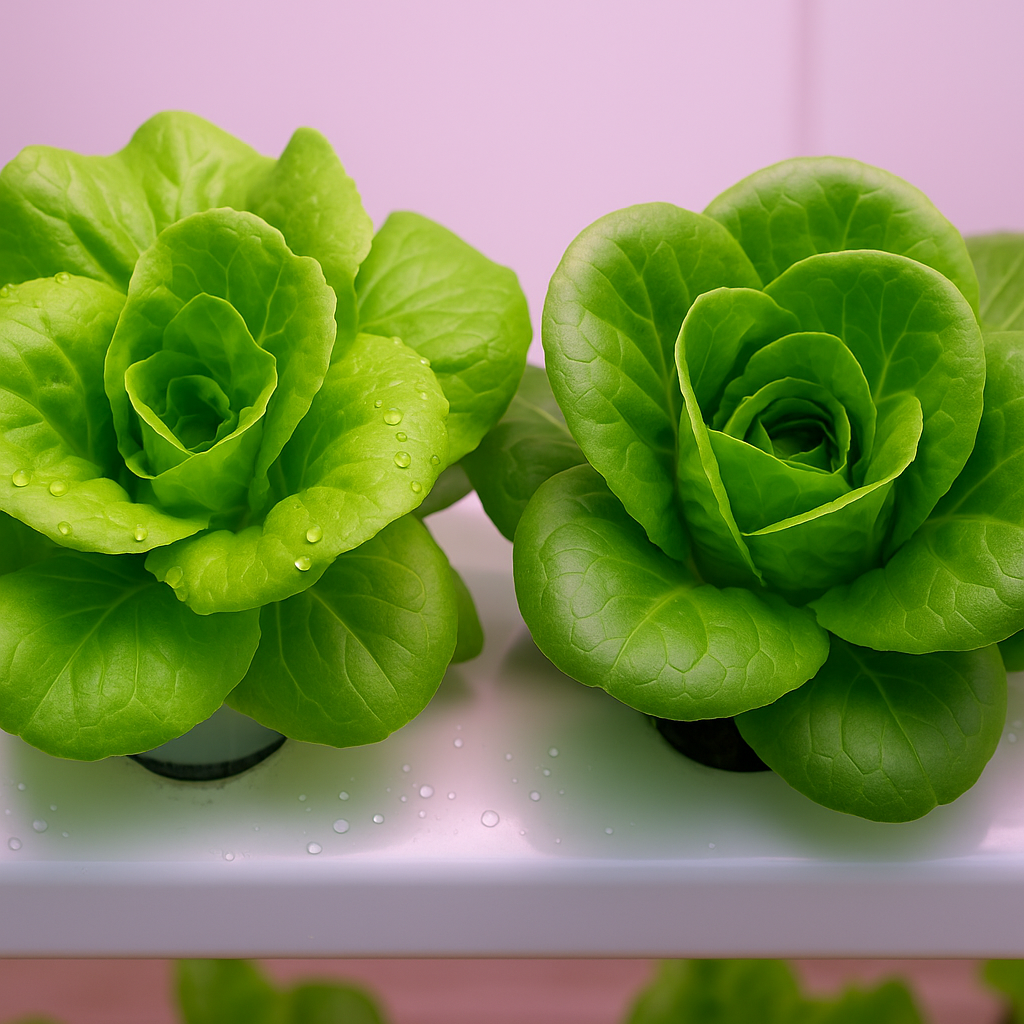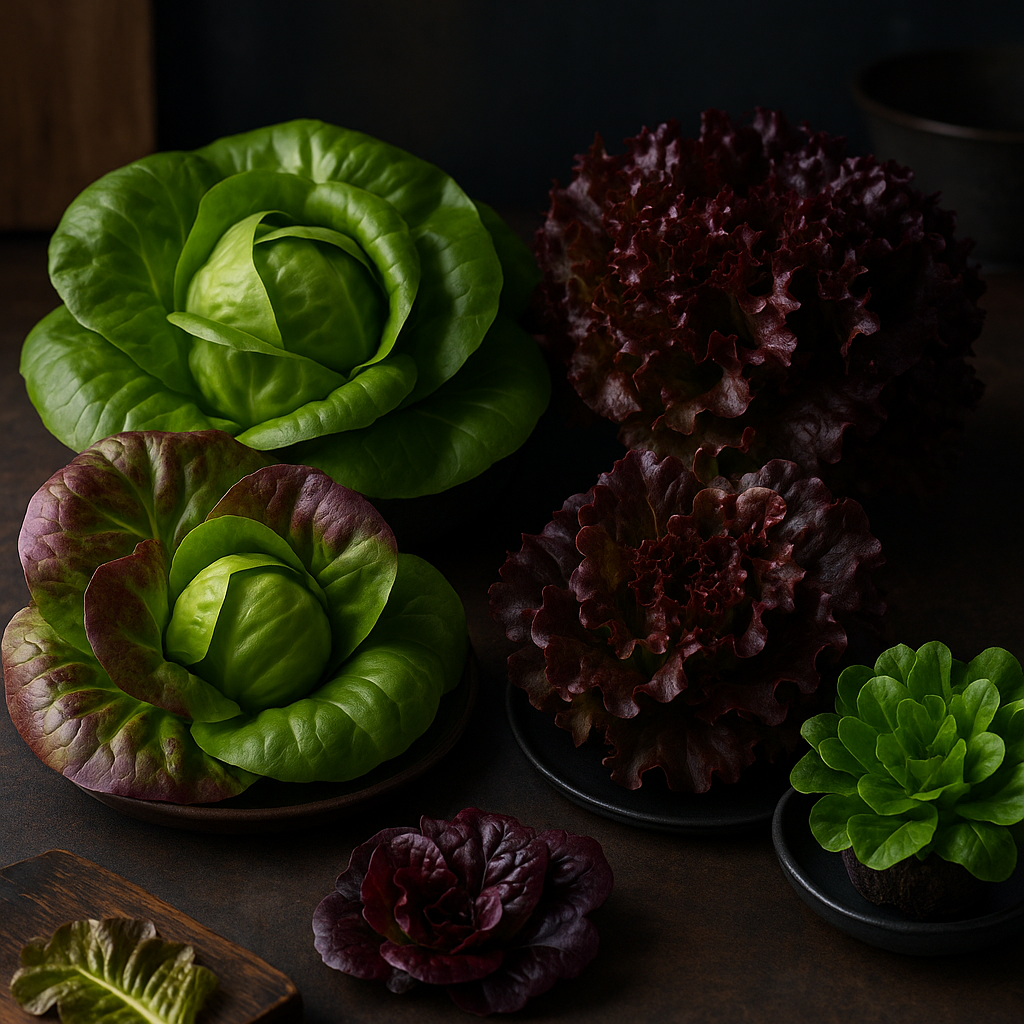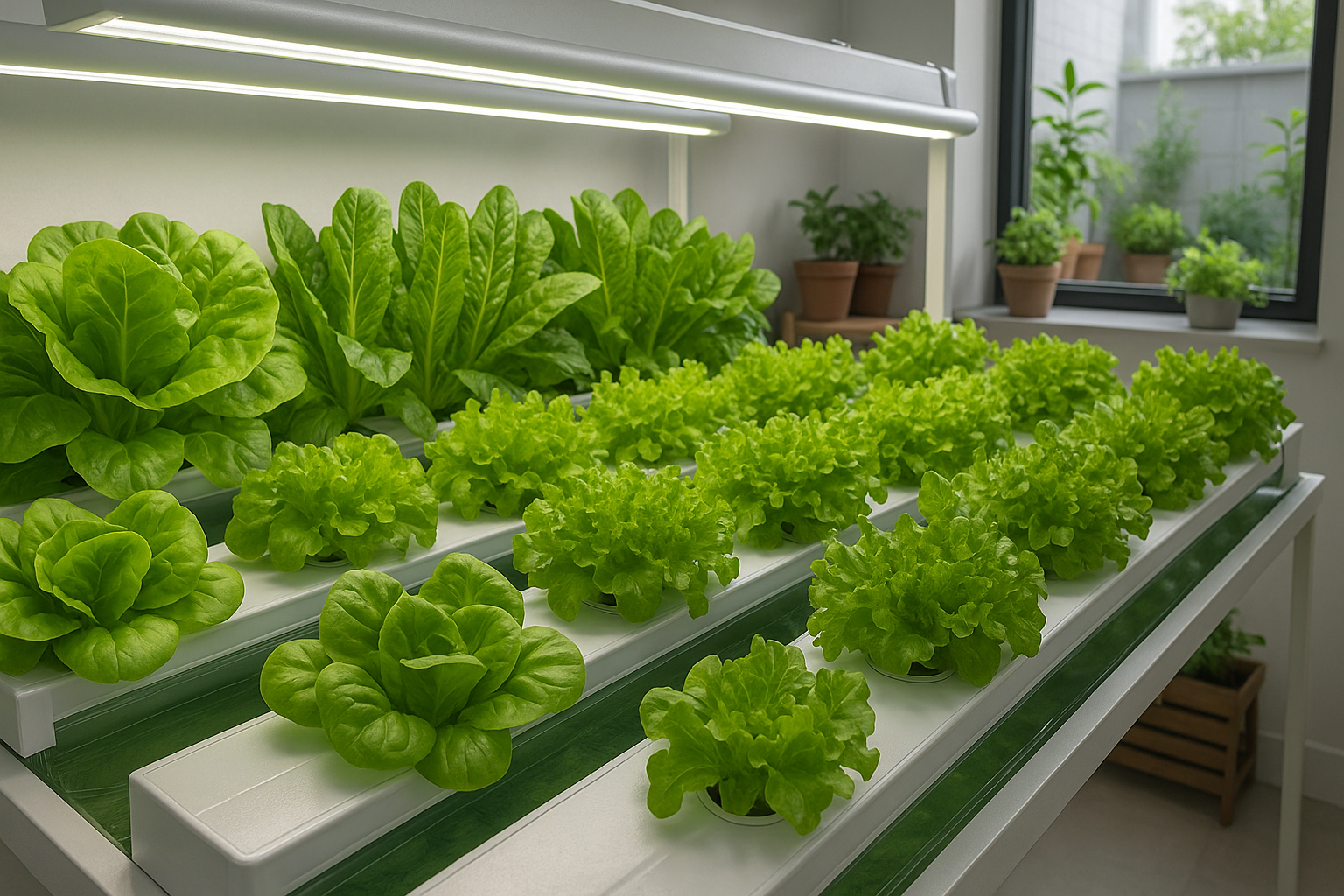Introduction
If you’re exploring the world of soilless gardening, you’ll quickly discover that finding the best hydroponic lettuce varieties is key to maximizing both harvest quality and yield. Hydroponic growing has soared in popularity for lettuce production due to its efficient use of space, water savings, and consistent year-round results.
Lettuce, in particular, thrives in hydroponic setups because of its short growth cycle, adaptability to nutrient solutions, and strong market demand for fresh, crisp greens. Whether you’re a home grower looking for easy success or an entrepreneur aiming to supply local restaurants, selecting the right lettuce varieties will set you up for success.
In this article, we’ll dive into the top hydroponic lettuce choices—like butterhead, romaine, and crisphead—along with real-world tips for achieving fast, healthy growth. Ready to transform your hydroponic harvest? Let’s get started!
Why Grow Lettuce Hydroponically?

Growing lettuce hydroponically offers many benefits that make it attractive for both home gardeners and commercial growers. Hydroponic systems promote faster growth compared to traditional soil methods because plants receive nutrients directly at their roots. This often allows for harvesting lettuce in just a few weeks, enabling year-round production regardless of outdoor weather.
Hydroponics also uses less water than conventional gardening by recirculating water within the system, making it more efficient and eco-friendly. Another major environmental advantage is the reduced need for pesticides, as controlled indoor environments minimize pests and diseases. This leads to healthier produce and lowers the risk of chemical runoff, which is better for the planet.
Additionally, hydroponic setups can fit into small or unconventional spaces—ideal for urban areas or those with limited yard space. For home growers, this means fresh lettuce is always within reach, while commercial operations benefit from consistent quality and supply to meet market demand year-round.
Whether you want to save resources, protect the environment, or just enjoy convenient access to fresh greens, hydroponic lettuce offers a smart and sustainable way to grow.
Key Factors for Choosing Hydroponic Lettuce Varieties
When selecting lettuce varieties for hydroponic growing, several key traits can make your experience smoother and your harvests more reliable. Compact varieties are ideal because they fit more efficiently into hydroponic setups and reduce the risk of overcrowding—think butterhead or romaine types that don’t sprawl too widely.
Bolt resistance is especially important; hydroponic systems often have tightly controlled environments, but fluctuating temperatures or intense lighting can still encourage early flowering, which reduces your crop’s quality. Leaf type also matters: loose-leaf lettuces tend to be more forgiving and faster growing, while crisphead varieties can be more sensitive and are best suited for more experienced growers.
Growth rate is crucial since faster-growing lettuces like Green Oakleaf or Bibb allow for more frequent harvests and quicker turnover. Maintenance ease should also be considered; look for disease-resistant cultivars that minimize the need for chemical intervention. Don’t forget taste and texture—some hydroponic lettuces come out extra crisp or tender, making them perfect for salads and wraps.
The hydroponic system itself also guides your choice: NFT (Nutrient Film Technique) supports lighter, compact varieties, while raft-based systems like Deep Water Culture (DWC) can accommodate slightly bulkier heads. Matching your lettuce type to your system ensures healthier plants and more abundant yields.
Top Butterhead Lettuce Varieties

Butterhead lettuces are a favorite among hydroponic growers thanks to their compact size, tender leaves, and mild, buttery flavor. Two standouts in this category are Buttercrunch and Bibb (also known as Boston lettuce), both well-suited to hydroponic systems.
Buttercrunch is prized for its loose heads, crisp yet tender leaves, and sweet, mild taste. Its vibrant green leaves form rosettes that are both visually appealing and resilient, making it a reliable choice for beginners and pros alike.
Bibb or Boston lettuce offers slightly more delicate, cup-shaped leaves with a soft, velvety texture and subtle sweetness that elevates salads and wraps.
Both varieties thrive under 10–14 hours of moderate, indirect light and prefer water temperatures between 65–70°F. In hydroponics, ensure good airflow around the plants to prevent fungal issues, and harvest the outer leaves often to encourage continued growth.
It’s also helpful to maintain stable EC levels around 1.2–1.8 and pH between 5.5 and 6.5 for optimal nutrient uptake.
For a visual pop, consider adding Tom Thumb, a miniature butterhead with petite, buttery heads that mature quickly and fit beautifully into limited spaces.
With some attention to water cleanliness and regular nutrient checks, butterhead lettuces can provide a reliable, flavorful harvest year-round—making them an attractive staple for hobbyists and commercial growers seeking high-quality greens.
Leading Romaine and Loose-Leaf Lettuce for Hydroponics
If you’re considering hydroponic lettuce, selecting the right varieties makes all the difference in yield, taste, and ease of growing. Among romaine lettuces, Jericho and Paris Island Cos stand out for hydroponic systems.
Jericho is prized for its outstanding heat tolerance—ideal if your grow room gets warm. It stays crisp and resists bolting, so the leaves remain tender and sweet even during hot spells. Paris Island Cos is a classic choice, appreciated for its upright growth and dense, crunchy hearts.
Loose-leaf lettuces like Green Oak Leaf and Red Sails bring bright color and delicate, frilly leaves to your salad mix. Green Oak Leaf offers consistent yields and resists tip burn—an issue sometimes seen in hydro systems. Red Sails is a favorite for its stunning red-bronze color and soft, buttery texture; plus, it matures quickly, letting you harvest in as little as four weeks.
For best results, keep your nutrient solution between 5.8 and 6.2 pH, maintain temperatures around 65–70°F, and ensure good airflow to minimize disease. Space romaine heads about 10 inches apart to let them develop fully, while loose-leaf types can be grown closer together and picked as needed for cut-and-come-again harvests.
Try mixing several varieties in the same system—this not only boosts visual appeal but also ensures that if one variety struggles, others will likely thrive. With the right varieties and a little attention, you’ll enjoy continuous, fresh harvests straight from your hydroponic setup.
Unique and Specialty Lettuces Worth Trying

If your salad routine is begging for excitement, unique lettuces like Rex, Yugoslavian Red, Dynamite, and Salanova varieties are definitely worth seeking out. Rex is a butterhead standout, known for its rich green hue, velvety texture, and impressive tolerance to hydroponic issues like tip burn and bolting. It’s a popular choice for commercial growers who want reliability with a gourmet finish.
Yugoslavian Red delivers a visual punch with its marbled crimson and green leaves and a mild, buttery flavor that really elevates any plate. Dynamite, a crisp romaine-type hybrid, adds crunch and is prized for its high yields and resistance to common lettuce diseases—a real boon for anyone dealing with finicky growing conditions.
Salanova isn’t just one lettuce but a family of compact varieties bred for loose, multi-leaf heads that separate effortlessly—perfect for chef-level salads and efficient harvesting in small spaces. Adventurous growers turn to these specialty lettuces not only for the striking palette they add to dishes but also for their adaptability, improved shelf life, and often greater resistance to pests and diseases.
Incorporating unusual lettuces is an easy way to diversify your harvest, boost market appeal, and enjoy vibrant, fresh flavors that standard varieties simply can’t match.
General Tips for Growing Lettuce Successfully in Hydroponics
Growing lettuce successfully in hydroponics starts with creating the right environment. Aim for a temperature range between 60°F and 70°F (15°C–21°C) to keep lettuce crisp and avoid heat-induced bolting, which causes bitter flavors and early flowering.
Consistent lighting is just as crucial; most lettuce varieties need 14–16 hours of bright, indirect LED or fluorescent light each day. When it comes to nutrient solutions, use a balanced hydroponic formula specifically designed for leafy greens, keeping the electrical conductivity (EC) between 1.2 and 1.8 to promote healthy growth. Calibrate and change the solution every 1–2 weeks to prevent nutrient imbalances or buildup.
Watch for pests like aphids or fungus gnats—introduce beneficial insects like ladybugs or use neem oil as a gentle organic remedy if needed. Troubleshooting can save your crop:
- If your lettuce starts bolting, lower the temperature and reduce light exposure.
- For leaf burn at the tips, check that your EC isn’t too high and that roots aren’t oversaturated.
- If root rot appears, trim away affected roots and increase aeration using an air stone or better drainage.
When harvesting, snip outer leaves as needed or cut whole heads at the base early in the morning for the best texture. To maximize freshness, gently rinse leaves, dry them thoroughly, and store in airtight containers lined with paper towels in the refrigerator—most hydroponic lettuce will stay crisp for up to two weeks this way.
Small adjustments make a big difference, turning a modest hydroponic setup into a steady source of delicious greens.
Conclusion
Selecting the right hydroponic lettuce varieties means considering factors like growth speed, pest resistance, and the flavors or textures you prefer. Popular choices such as Bibb, Romaine, and Butterhead thrive in most home systems and consistently deliver delicious results.
Don’t be afraid to experiment with colorful or unusual varieties—mixing red and green lettuces can add both flavor depth and visual appeal to your salads. Hydroponic setups make it easy to try new types throughout the year, so take the plunge, grow your favorites, and share your experiences and photos with our community to inspire others!
